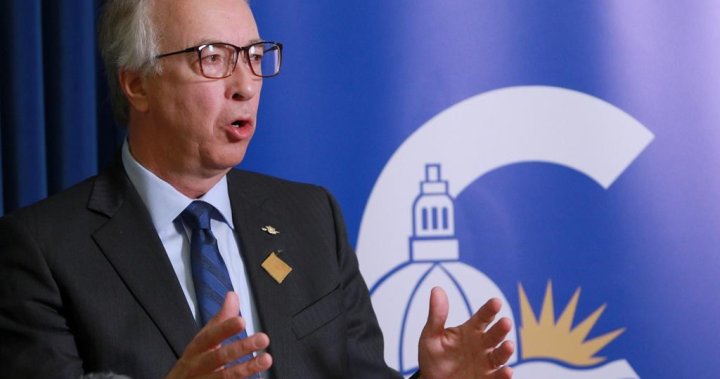Thousands of Palestinians fled northern Gaza on Wednesday, travelling kilometres on foot through the battered enclave in a growing exodus prompted by Israel’s intensified ground and air campaign.
Streams of people — women, children, the elderly and disabled — made their way down Salah Eddin St, one of the two north-south highways in Gaza, along an evacuation corridor announced by the Israel Defence Forces.
One teenage girl compared the mass movement to the “Nakba,” or catastrophe, the Arabic term for the expulsion of Palestinians from their towns during the founding of Israel.
Watch the latest News on Channel 7 or stream for free on 7plus >>
It was the fifth day in a row that the IDF opened an evacuation window, and the numbers of people fleeing south have increased each day.
The UN said 2000 had fled south on Sunday, rising to 15,000 on Tuesday.
The Israeli government said 50,000 Gazans travelled via the evacuation corridor on Wednesday.
That number could not be independently verified, but a CNN journalist at the scene said the numbers leaving were larger than on Tuesday.
Israel has been ramping up its offensive inside Gaza, following the October 7 attacks that left 1400 people in Israel dead.
Israeli Defence Minister Yoav Gallant claimed Tuesday that IDF troops were at the “heart of Gaza City” and targeting Hamas infrastructure and commanders there. It is unclear where exactly Israel is fighting.
“Gaza is the biggest terror stronghold that mankind has ever built. This whole city is one big terror base. Underground, they have kilometres of tunnels connecting to hospitals and schools,” Gallant said.
“We continue to dismantle this capability.”
The IDF has been bombarding Gaza for weeks, saying it hit 14,000 terrorist targets in the densely packed territory.
A man who did not provide his name told a CNN journalist in southern Gaza that he and his neighbours had lived through “horrifying days”.
He said that they had left their home in northern Gaza and moved several times, but that it was impossible to escape the airstrikes.
“This war left nothing safe — not churches, not mosques or anything. Today, they dropped the leaflet ordering us to leave to the alleged safe area. Now we are beyond this area of Wadi Gaza, and we are still hearing bombardments. There is no safe place in Gaza.”
“We are seven families. All of our houses are gone. Nothing is left. We couldn’t take anything – no clothes, no water, nothing. The way here was very difficult. If something falls, you are not allowed to pick it up. You are not allowed to slow down. Dead bodies everywhere.”
‘Destruction everywhere’
Baraa, a 16-year-old girl, said that she had been walking for a long time.
“It felt like the Nakba (catastrophe) of 2023,” she said, using the Arabic term for the expulsion of Palestinians from their towns during the founding of Israel.
“We walked by people who were ripped to parts, dead bodies. We walked beside tanks. The Israelis called us, and they were asking people to take off their clothes and throw their belongings. Children were very tired because there was no water.”
CNN has asked the IDF about the allegation that evacuees were made to remove clothing and get rid of belongings.
“We came under heavy shelling and had no choice but to leave our area,” Hani Bakhit said.
“We ended up using donkey carts because there were no cars, fuel, or drinking water available. Nothing is left for us. They forced us to leave by cutting off all available resources,” he said, referring to Israeli forces.
“People who have nothing to do with the resistance are being bombed and so they are fleeing to the south,” Khader Hamad said. “They are all children, newborns, women.”
People carried few possessions in the arms or on their backs. Some sat on carts drawn by donkeys. On Tuesday, some could be seen carrying white flags and holding aloft identity documents.
“Donkey carts are the only means of transportation left,” Abu Ida said.
“There is no solar power or fuel left for cars, but also those who have cars are afraid to use them. I cannot walk because I have diabetes, there’s no way I can walk on my feet.”
A woman who did not provide her name said “we are being destroyed”.
“No one cares about us. Maybe we are safe now, but I’m not sure about those who are still behind. I don’t know where my family is. My siblings are behind me. Out of fear, I couldn’t look behind. Not right, not left.
“We came from Al Shifa (Hospital), and we saw death on the way. Dead bodies, destruction everywhere.”
‘Clearly wrong’
More than 10,500 people have been killed in Gaza since the conflict began — about three —quarters of which are children, women and the elderly, according to a report Wednesday by the Palestinian Ministry of Health in Ramallah, which draws on sources from the Hamas-controlled enclave.
It’s unclear how many combatants are included in that total.
The number of civilian deaths in Gaza during the past month means something is “clearly wrong” with Israel’s military operation, the United Nations secretary general said Wednesday.
“Nothing should reduce our total rejection for the horrible things that Hamas did” in its October 7 attacks that killed about 1400 people, Secretary-General António Guterres said in an interview with Reuters.
“But we need to distinguish: Hamas is one thing, the Palestinian people (are) another.
“There are violations by Hamas when they have human shields,” he said.
“But when one looks at the number of civilians that were killed with the military operations, there is something that is clearly wrong.”
Israel’s operations must be conducted with full respect to the laws of war, Guterres said, while allowing for humanitarian aid to enter Gaza.
“To a certain extent, the sympathy that is generated in the world is being put into question by the images that every day we have in which we see people in a dramatic humanitarian situation,” he said, also calling for the immediate release of all hostages held by Hamas.”
If you’d like to view this content, please adjust your .
To find out more about how we use cookies, please see our Cookie Guide.


/cdn.vox-cdn.com/uploads/chorus_asset/file/24931307/236791_Apple_iPhone_15_and_15_Plus_review_DSeifert_0010.jpg)




